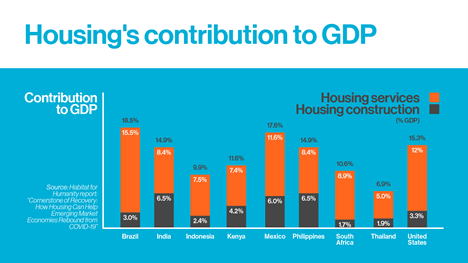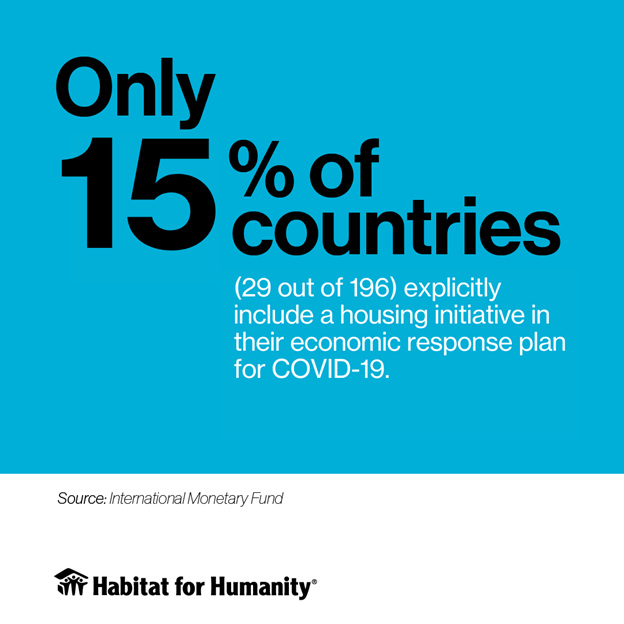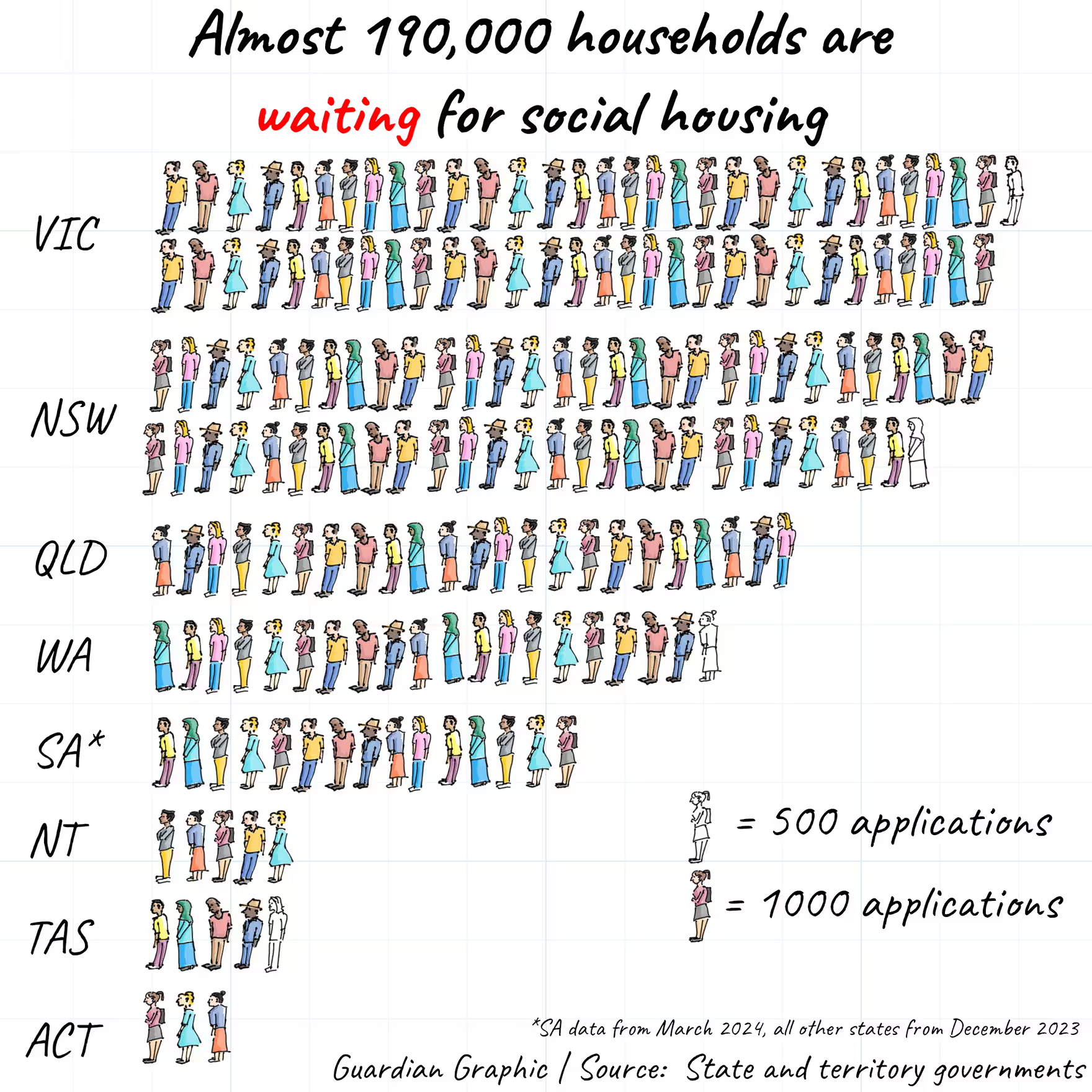
- The pandemic response highlighted how a chronic lack of safe and affordable housing is one of the biggest drivers of health and wealth disparities in our world.
- To reinvent affordable housing, we must focus on innovations that champion public health, sustainability and scalability.
- Governments, corporations and civil society have important roles to play in advancing disruptive solutions to the chronic shortage of safe, affordable housing around the globe.
When more than 90 countries issued stay-at-home orders during the height of the COVID-19 pandemic, over 1 billion people across the globe sheltered in slums and informal settlements. Yet, these necessary public health measures offer scant defence against this potentially deadly virus if housing conditions are unsafe. The urgency of the pandemic response spotlighted an inescapable truth: chronic lack of safe and affordable housing in both advanced economies and developing nations is one of the biggest drivers of health and wealth disparities in our world.
As we grapple with how to adapt to ongoing waves of the virus and move towards rebuilding healthier, more equitable societies, we must expand the global supply of affordable housing by focusing on innovations that champion public health, sustainability and scalability. These three inextricably linked pillars can drive a new global housing framework that creates more equitable access to affordable housing and, as a result, improves health outcomes, fortifies disaster resilience and mitigates environmental impact.
Strategies and mindsets to reinvent affordable housing
1. Home as a health solution
The connections between health and home have long been recognized by the medical community. Poor housing conditions have been linked to debilitating illnesses, from respiratory conditions to infectious diseases such as tuberculosis and influenza, and diarrhea, which is among the leading causes of childhood death worldwide. In many cases, simple upgrades to a home’s roof, windows and floor can have a transformational impact on the health of a family and its surrounding community. A 2007 World Bank study found that replacing a home’s dirt floors with concrete can lead to “a 78 percent reduction in parasitic infestations, a 49 percent reduction in diarrhea, an 81 percent reduction in anemia and a 36 to 96 percent improvement in cognitive development.”
But even these small upgrades remain out of reach for many families. In emerging markets, it is common for households to build shelter incrementally as finances allow – a process that can take up to 30 years. The work starts and stops as resources are available, often resulting in increased construction costs and inconsistent quality of materials over time.
Housing entrepreneurs are working to bring affordable, scalable solutions to families that can mitigate preventable, life-threatening health concerns and can truly reinvent affordable housing. In Rwanda, upgrading to a concrete floor can cost more than two months’ wages for the average family. Non-profit startup EarthEnable is using local materials and labour to provide an earthen floor alternative that delivers the same benefits as concrete at a quarter of the price.
As families strive to upgrade their homes, they need access – both physical and economical – to building products that will keep them safer.

2. Investing in sustainable methods that work
In addition to addressing the connections between housing and health, trailblazers like EarthEnable are proving that affordable solutions can also be green solutions. By sourcing materials locally, and even hyper locally – within a few meters of an ongoing project – they are streamlining supply chains, reducing greenhouse gas emissions and creating employment opportunities within the community.
With the construction sector consuming over 3 billion tons of raw materials each year – more than any other industry – we need to be more intentional about leveraging sustainable and recycled supplies. Again, startups are leading the way, leveraging low-cost modernizations for everything from lighting fixtures to pavers that are five to seven times more durable than concrete. In India, ReMaterials recycles packaging and agricultural waste into modular roof panels for families living in slums. These roofs have been shown to reduce a home’s indoor air temperature by 18 degrees Fahrenheit, improving quality of life and decreasing the risk of heatstroke.
Governments and housing non-profits have a critical role to play in ensuring startups developing these green housing innovations can scale their products and get them to vulnerable communities in greatest need.

3. Scaling to reach 1 billion homes
The need to create more adequate housing opportunities around the world continues to grow exponentially. Improving incremental construction is a critical strategy, but with over 3 million people moving to cities every week, we must also sustainably and rapidly scale-up new construction.
Entrepreneurs around the world are rethinking housing construction from the ground up to produce more efficient solutions. Modular homes offer a promising solution, with new companies taking up this challenge everywhere from Chile to Estonia. In the Philippines, CUBO Modular has developed a home kit that combines modular design with renewable materials and local craftsmanship to create “a housing solution for Filipinos, by Filipinos.”
Increasing housing supply also requires us to think differently about how we use and prioritize space. In the US, a mixed-income, mixed-use community now includes a farm to source food hyper locally for residents at a discounted rate. By emphasizing spatial needs and constraints in planning new developments, we can improve quality of life by enabling people to live closer to where they work while reducing traffic and environmental impact. Furthermore, data shows that mixed-income neighbourhoods produce better long-term health outcomes and economic mobility for individuals and families.
























![Green Building Materials Market Trends [2023-2030]](https://housingcable.ng/wp-content/uploads/2022/04/csrgreen-building_Cisco_04222022-218x150.png)








